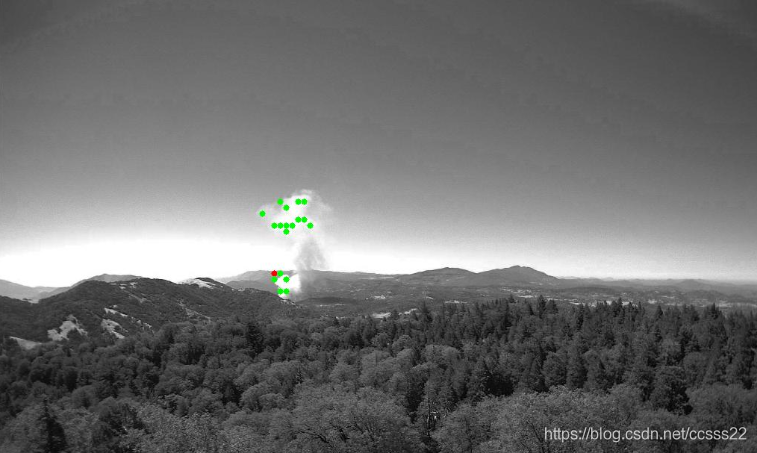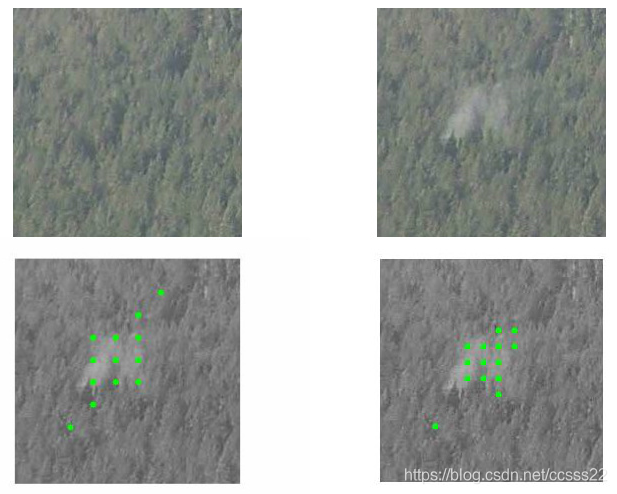远处场景的烟雾识别matlab仿真
1.问题描述
一种基于数据集的图像分离方法[2]来自太浩湖和南加州地区的图片。这里我们介绍一个用小像素区域确定大图像显著区域的抠图技术与烟雾相对应。这就允许了大量的不重要的区域将图像传递给分类器时要过滤掉的。
2.部分程序
%% ACMA M1 Assignment Question 1
clc,clear;
close all;
addpath 'func\'
global M1 M2 N tau h1 h2 S1 S2
T = 1; %end time
% N = 100; % Number of timesteps taken to get to time total
% M1 = 50; % number of spatial nodes
% M2 = 50; % number of spatial nodes
%设置一个稀疏比例稀疏NN
K1 = 5;
K2 = 2;
K3 = 2;
N = floor(100/K1); % Number of timesteps taken to get to time total
M1 = floor(50/K2); % number of spatial nodes
M2 = floor(50/K2); % number of spatial nodes
S1 = floor(100/K3); %integral interval of alpha
S2 = floor(100/K3); %integral interval of beta
x=zeros(M1-1,1);
y=zeros(M2-1,1);
t=zeros(N-1,1);
% x = linspace(0,1,M1-1)';y = linspace(0,1,M2-1)';t = linspace(0,T,N)';
alpha=zeros(S1,1);
beta=zeros(S2,1);
uold=zeros(M1-1,1);
% U=zeros(M1-1,M2-1);
u_star=zeros(M1-1,1);
% U_star=zeros(M1-1,M1-1);
h1 = 1/M1; % spatial step length
h2 = 1/M2; % spatial step length
tau = 4*T/N; % timestep length
for i=1:M1-1
x(i)=i*h1;
end
for l=1:M2-1
y(l)=l*h2;
end
for k=1:N
t(k)=k*tau/4;%这里除以4,保证整体时间不变
end
figure;
[x,y]=meshgrid(x,y);
u_exact = u_analytic_solution(x,y,1);
scatter3(x(:),y(:),u_exact(:),'.','b');
hold on;
u0 = 0; uM1 = 0; uM2 = 0; % Boundary conditions are dirichlet = 0;
% Intialise ...
A = zeros(M1-1); b = zeros(M1-1,1);
B = zeros(M2-1); c = zeros(M2-1,1);
% set up A matrix
for i = 1:M1-2
A(i,i)=1;
A(i,i+1)=0;
for j=1:S1 % shift formula is different since Matlab indexs from 1
alpha=alpha_func(j);
P = P_func(j);
A(i,i) = A(i,i) - (tau/S1)*(P*(-alpha)/h1^alpha);
A(i,i+1) = A(i,i+1) - tau/S1*(P/h1^alpha);
end
for k=1:i-1
for j=1:S1
alpha=alpha_func(j);
P = P_func(j);
g1 = g1_func(i,j,k);
A(i,k) = A(i,k) - tau/S1*P/h1^alpha*g1;
end
end
end
for k=1:M1-2
for j=1:S1
alpha=alpha_func(j);
P = P_func(j);
g1 = g1_func(M1-1,j,k);
A(M1-1,k)=A(M1-1,k)-tau/S1*P/h1^alpha*g1;
end
end
A(M1-1,M1-1)=A(M1-2,M1-2);
% set up B matrix
for k = 1:M2-2
B(k,k)=1;
B(k,k+1)=0;
for j=1:S2 % shift formula is different since Matlab indexs from 1
beta=beta_func(j);
Q = Q_func(j);
B(k,k) = B(k,k) - tau/S2*(Q*(-beta)/h2^beta);
B(k,k+1) = B(k,k+1) - tau/S2*Q/h2^beta;
end
for l=1:k-1
for j=1:S2
beta=beta_func(j);
Q = Q_func(j);
g2 = g2_func(l,j,k);
B(k,l) = B(k,l) - (tau/S2)*(Q/h2^beta)*g2;
end
end
end
for l=1:M2-2
for j=1:S2
beta=beta_func(j);
Q = Q_func(j);
g2 = g2_func(l,j,M2-1);
B(M2-1,l) = B(M2-1,l) - (tau/S2)*(Q/h2^beta)*g2;
end
end
B(M2-1,M2-1)=B(M2-2,M2-2);
%%
U_star=[];
% slove u_star
for l=1:M2-1
u_star=u_initial_func(x,y);
for k=1:N-1
uold=u_star;
for i = 1:M1-1
f = source_func(x(i)+0.05,y(l)-0.05,t(k+1)); % evaluate source function at new time
b(i) = uold(i) + tau*f; % evaluate new rhs vector.
end
u_star = A\b; % solve
end
U_star=[U_star,u_star];
end
U=[];
%这个比例系数用来修正误差的,属于数值模拟出来的经验公式
k123=960*K1^0.82*2^(K2/4)/(K3^0.65);
for i=1:M1-1
c = real(U_star(i,:)'); % evaluate new rhs vector.
u = B\c.^2; % solve
U=[U,k123*u];
end
figure(1);
% plot3(x,y,U','r.');hold on;
h1=mesh(x,y,abs(U'));hold on;
set(h1,'facealpha',0.3)
title('u(x,y,t)')
xlabel('x')
ylabel('y')
view([-144,28]);
u_a=zeros(11);
u_n=zeros(11);
norm(u_analytic_solution(x,y,t(N)) + U,2)
figure;
subplot(121);
scatter3(x(:),y(:),u_exact(:),'.','b');
title('u exact')
xlabel('x')
ylabel('y')
subplot(122);
h1=mesh(x,y,abs(U'));hold on;
set(h1,'facealpha',0.3)
title('u(x,y,t)')
xlabel('x')
ylabel('y')
3.仿真结论:


D-25


